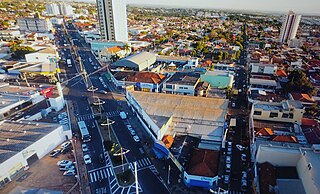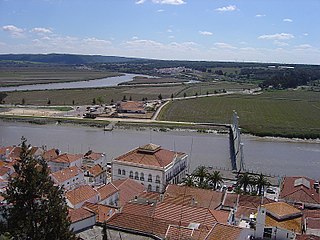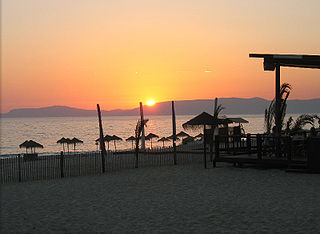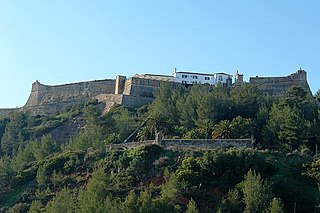
Niigata Prefecture is a prefecture in the Chūbu region of Honshu of Japan. Niigata Prefecture has a population of 2,131,009 and is the fifth-largest prefecture of Japan by geographic area at 12,584.18 km2 (4,858.78 sq mi). Niigata Prefecture borders Toyama Prefecture and Nagano Prefecture to the southwest, Gunma Prefecture to the south, Fukushima Prefecture to the east, and Yamagata Prefecture to the northeast.

Sado Island is an island located in the eastern part of the Sea of Japan, under the jurisdiction of Sado City, Niigata Prefecture, Japan, with a coastline of 262.7 kilometres (163.2 mi). In October 2017, Sado Island had a population of 55,212 people. Sado Island covers an area of 854.76 km2 (330.02 sq mi), and is the second largest island after Okinawa Island outside of the four main islands of Japan, excluding the disputed Southern Kurils. The shortest distance between Sado Island and Honshu is 32 km (20 mi). The highest peak on Sado Island is Mount Kinpoku, with an elevation of 1,172 m (3,845 ft).

Setúbal is a city and a municipality in Portugal. The population of the entire municipality in 2014 was 118,166, occupying an area of 230.33 km2 (88.9 sq mi). The city itself had 89,303 inhabitants in 2001. It lies within the Lisbon metropolitan area, about 50 kilometres from Lisbon downtown by road.

Fernandópolis is a municipality in the state of São Paulo, Brazil. The population is 71,186 in an area of 550 km2. Fernandópolis is the center of the microregion of Fernandópolis with 104,623 inhabitants and area of 2,811.7 km2.

Alcácer do Sal is a municipality in Portugal, located in Setúbal District. The population in 2011 was 13,046, in an area of 1,499.87 km2.

Santiago do Cacém is a municipality in Setúbal District in Portugal. The population in 2011 was 29,749, in an area of 1059.69 km2.

The river Sado is a river in southern Portugal; it is one of the major rivers in the country. It flows in a northerly direction through 175 kilometres (109 mi) from its springs in the hills of Ourique before entering the Atlantic Ocean in an estuary in the city of Setúbal.

Tróia is a peninsula located in Grândola Municipality, Portugal, next to the Sado River estuary. Tourism is the peninsula's main economic activity due to its long beaches facing the Atlantic. There is a ferry boat connection between the peninsula and the city of Setúbal. Tróia has important archaeological sites dating from the time when the peninsula was an island called Acalá, settled by the Romans.

The Prehistoric Rock-Art Site of Escoural Cave is a structure known for its Paleolithic-era rock-art and funerary burial site, located in the Portuguese municipality of Montemor-o-Novo, in the civil parish of Santiago do Escoural.
The Companhia das Lezírias or CL for short, is a state-run agriculture and forestry company located in the Lezíria do Tejo subregion, and headquartered in Samora Correia, Benavente municipality, Portugal. It was founded in the 19th century by the Portuguese Crown. The company is an ecological sanctuary and periurban farming area, near Grande Lisboa subregion - the most populated subregion of Portugal. The company produces rice, wine, cork, and livestock, as well as being a reputed horse breeder. In addition to its farming, forestry, and animal production activities, the Companhia das Lezírias has organised top equestrian events.

Sado Estuary Natural Reserve is a nature reserve in Portugal. It is one of the 30 areas which are officially under protection in the country. It is located between the municipalities of Alcácer do Sal, Comporta and Setúbal.

Comporta is a freguesia and village in the municipality of Alcácer, in the old district of Setúbal, in continental Portugal, located at the base of the Tróia Peninsula, along the Sado estuary. The population in 2011 was 1,268, in an area of 150.54 km2. It is part of, and the namesake of, the larger Comporta Coastal region.

The Castle of Alcácer do Sal is a medieval castle located in the civil parish of Alcácer do Sal e Santa Susana, in the municipality of Alcácer do Sal, Portuguese district of Setúbal.

Castle of Palmela is a castle in Portugal. It is classified as a National Monument.
The Daihatsu A-series engine is a range of compact two-cylinder internal combustion piston engines, designed by Daihatsu with the aid of their owner Toyota. Petrol-driven, it has cast iron engine blocks and aluminum cylinder heads, which are of a single overhead cam lean burn design with belt-driven camshafts. The head design was called "TGP lean-burn", for "Turbulence Generating Pot". The engine also had twin balancing shafts, which provided smoothness equivalent to that of a traditional four-cylinder engine - although it also cost nearly as much to build.

Linha de Sines is a railway line which connects the station of Ermidas-Sado, on the Linha do Sul, to the Port of Sines, in Portugal. It used to be connected to the station of Sines via a branch line. The first section, from Ermidas-Sado to São Bartolomeu da Serra was opened on 9 April 1927. The line reached Cumeadas on 1 July 1929, Santiago do Cacém on 20 June 1934, and Sines on 14 September 1936.

The Fort of Santiago do Outão is a former coastal military installation in Setúbal, Portugal that is currently the site of the Hospital Ortopédico Sant'Iago do Outão. The fort is located on the Costa Azul at the northern side of the Sado River's mouth.

The Fort of São Filipe de Setúbal, also referred to as the São Filipe Castle or the São Filipe Fortress, is in the city of Setúbal in the Setúbal District, of Portugal. The fort was built on the orders of Philip II of Spain, who personally witnessed the laying of the cornerstone of the new fortification in 1582. It stands in a dominant position on the right bank of the mouth of the Sado River, overlooking the centre of Setúbal to its east and guarding access to the river. Named after the king during the Iberian Union, the fortress was designed by Giovan Giacomo Paleari Fratino and had the Italian military engineer Filipe Terzi, who worked for the Spanish Royal Court, as its chief engineer. It was completed in 1600 under the guidance of Leonardo Torreano due to the death of Terzi.

The Roman ruins of Tróia is an archaeological site located on the left bank of the River Sado, on the northwest side of the Tróia Peninsula, opposite Setúbal, in the Setúbal District of Portugal. The ruins, which include fish processing facilities, thermal baths, and burial sites are from between the 1st to 6th centuries CE. They have been classified as a Portuguese National Monument since 1910.

















